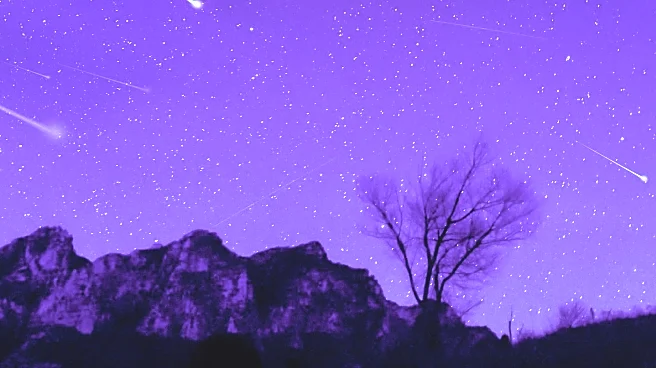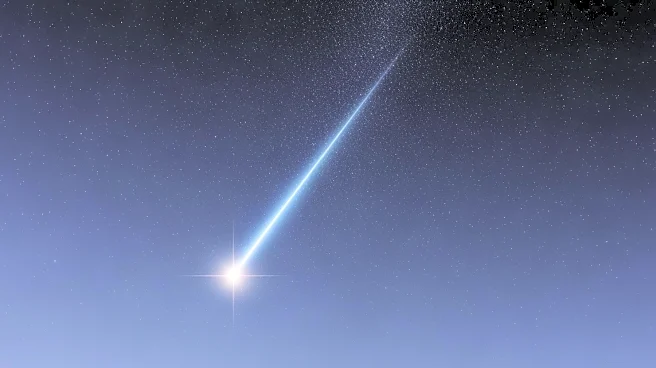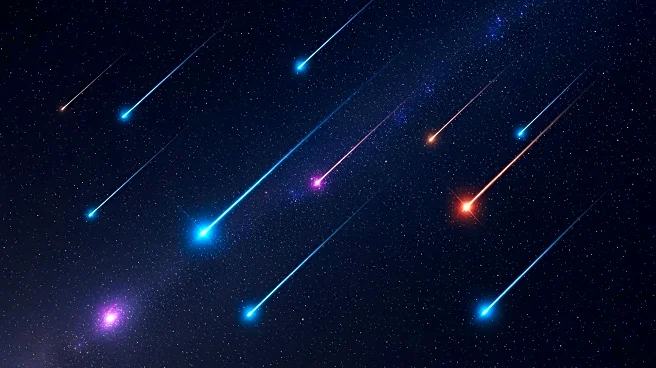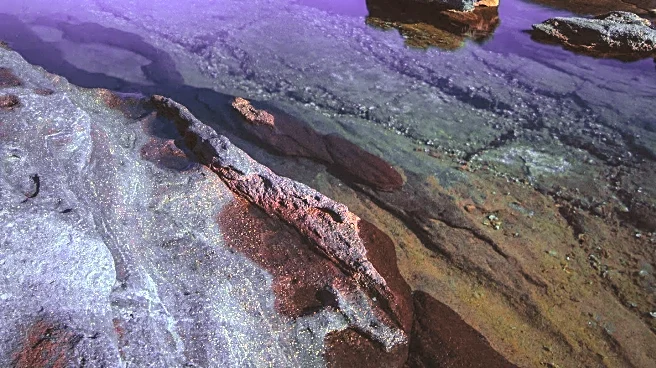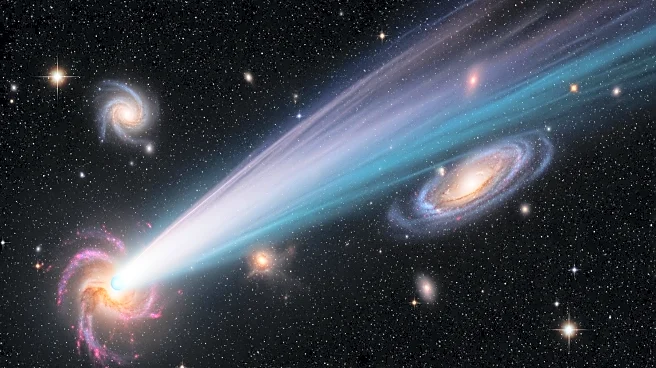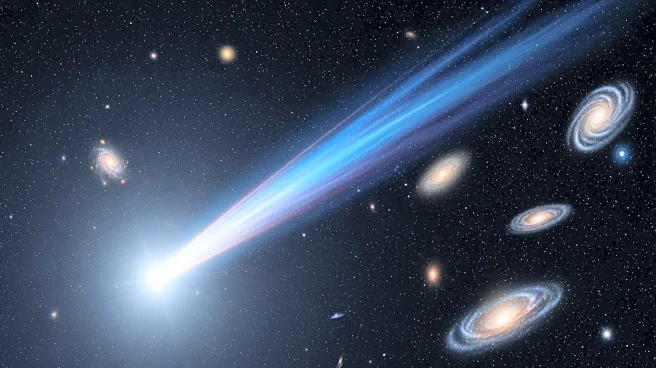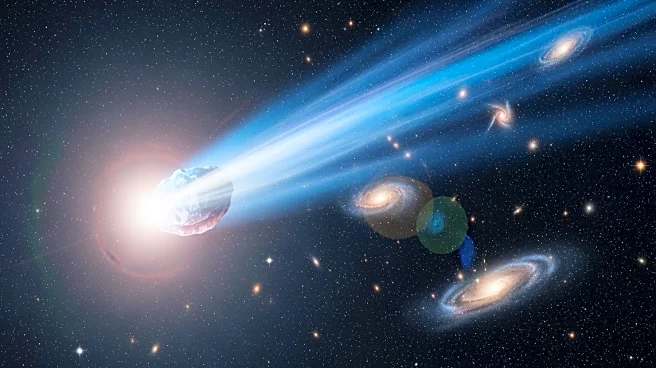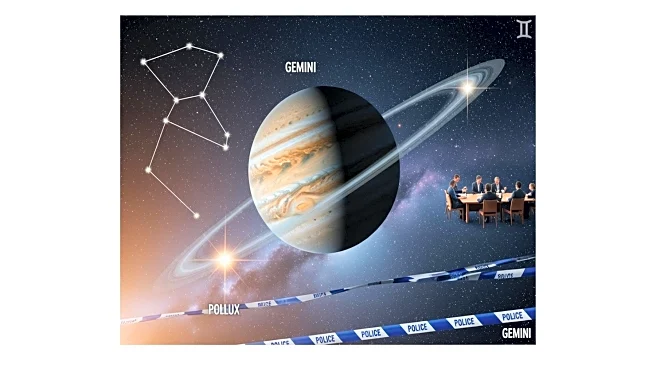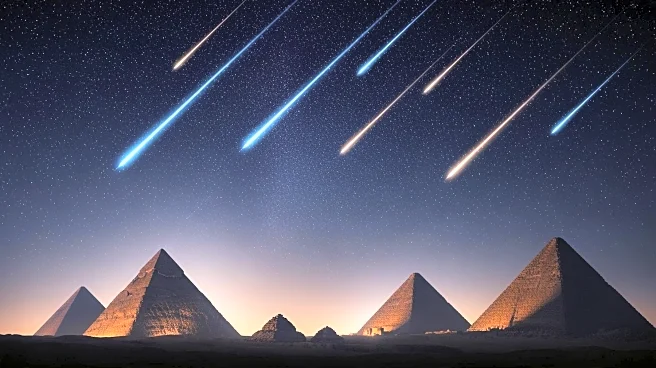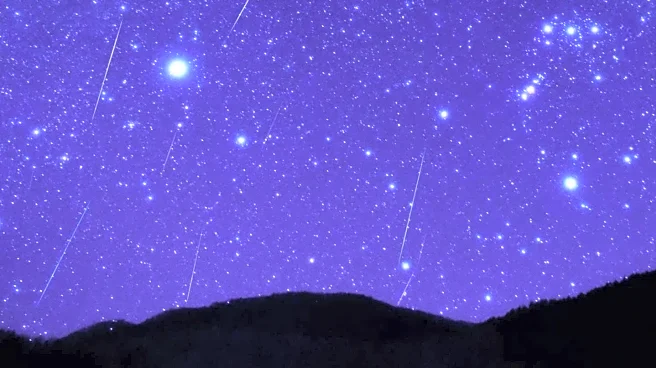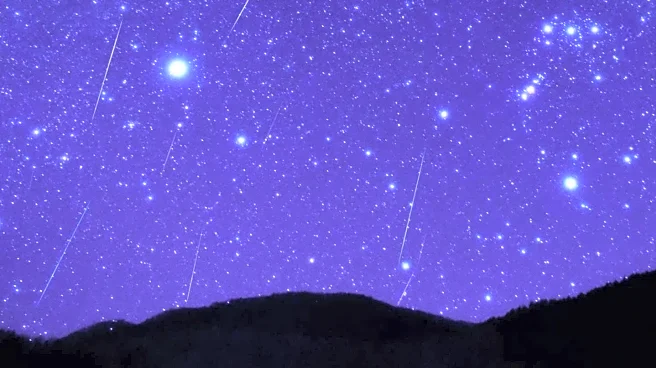What's Happening?
The Southern Taurids meteor shower is set to peak on the evening of November 4 to November 5, offering a spectacular display of bright fireballs. This meteor shower originates from the debris of comet
2P/Encke, which orbits the Sun every 3.3 years. The American Meteor Society predicts that the shower will be visible from almost anywhere on Earth, except Antarctica, with the best viewing times around midnight. NASA advises stargazers to find a location away from city lights and to allow their eyes to adjust to the darkness for optimal viewing.
Why It's Important?
Meteor showers like the Southern Taurids provide a unique opportunity for the public to engage with astronomy and appreciate the natural phenomena of the cosmos. These events can inspire interest in science and space exploration, potentially influencing educational pursuits and public support for space-related initiatives. The visibility of such showers across large geographic areas also fosters a sense of global connectivity, as people worldwide share in the experience of observing the night sky.
What's Next?
Following the Southern Taurids, the Northern Taurids meteor shower is expected to peak on November 11 to November 12. This sequence of meteor showers offers continued opportunities for stargazing and public engagement with astronomy. Observers are encouraged to plan their viewing experiences, considering weather conditions and light pollution, to maximize their chances of witnessing these celestial events.
Beyond the Headlines
Meteor showers are not only a visual spectacle but also a reminder of the dynamic nature of our solar system. The debris trails left by comets like Encke contribute to our understanding of the composition and behavior of these celestial bodies. As research continues, meteor showers may provide insights into the history and evolution of the solar system, offering clues about the formation of planets and other cosmic phenomena.
